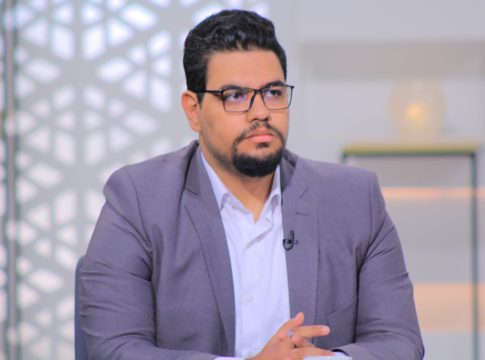The Iranian riyal has fallen to its lowest record in history, as the national currency was reduced to 60,000 riyals per, according to the Financial Information Network Web site, which is a reference for the currency market in Iran. The reduction followed the Council of Ministers’ decision to reduce the official riyal rate from 37,000 to 42,000 per US dollar, with a difference of nearly 1.5 between the official rate and the black market rate.
It is to be noted, that the Central Bank of Iran decided in December 2016 to replace the Riyal with the Toman with the rate of one Toman to ten Riyals; yet the Riyal remains the official currency used in global and local media, as well as, research papers and reports.
The curve shown above is not updated at the new official rate and is fixed at 37000 riyals against the dollar, accordingly you can imagine the sharp rise since 2013 and lately with the latest development the curve will sky rocket to a new height.
These figures and news indicate a crisis within the Iranian currency market, as well as, economy, which contradicts with the voices that have previously praised the strength of the Iranian industry and economy. In fact, if the industrial economic base was strong, we would not have seen such a currency collapse.
The apparent causes of the economic crisis are the enormous costs of Iranian intervention in the regional conflicts to support groups and militias loyal to Iran, which has grown into multiple fronts.
The second is the soundness of the nuclear deal signed by Obama, as over the past few weeks, the US president's decision to appoint Mike Pompeo, as Minister of Foreign Affairs, John Bolton as National Security Adviser and Gina Haspel as Director of CIA. The three characters agree that the nuclear deal is a bad deal for the United States, further more the White house’s multiple statements against Iran and the formal hint of cancelling the nuclear agreement with, which is causing a major disruption to the optimistic economic trade and economic plans Iran had in place upon concluding this agreement, and lead as well to holding its prospects of an economic recovery and a black market that has been thriving in since Trump took office.
In reaction to the economic deterioration, the Iranian government held an emergency meeting of the Council of Ministers to manage the crisis that was held on Monday evening (April 9th). The meeting called upon the Governor of the Central Bank, Walie El Deen Sief and Minister of Economy Massoud Karbisian for a hearing in parliament.
In light of the meeting, security measures have been placed to pursue the black market. The Central Bank injected more dollars into the official market channels, to meet the requirements of the market and raising interest rates to stimulate individuals and companies to save and deposit in banks.
It is to be noted though that attempts to attract savings and specially US Dollar savings transformation into local currency has been going on for over a year and interest rate has reached 20% over annual deposits and is heading for higher rates; yet so far this method has failed in bridging the gap in the economy.
People reacted to the developments by long queues that have been observed on the exchange office to buy the dollar and profit from official and informal price differentials and the currency market is booming as never before.
The fundamental causes of the economic crisis
Iran has the third largest proven oil reserves in OPEC countries and fourth in the world by about 160 billion barrels. Its daily oil production is about 3.8 million barrels per day.
Iran’s economy depends entirely on oil, 80% of Oil exports, 15% on petrochemical and oil related products and 5% only on non-oil products.
Iran subsidises its currency to date, which is the biggest distortion towards reaching a healthy economy. On the other hand, there is practically a hold to any fiscal, monetary or legislative reform policies.
Iran will not be able to eliminate the currency problem through liberalising the currency and supporting it at the same time to end the price crisis, such method has proven its failure over years, and no country can continue on this path any longer.
The various imbalances of the economy have mainly resulted from the western sanctions because of the nuclear file. Yet, the conflict between the institution of the Revolutionary Guards on one hand and the presidential and government institution has also lead to a share of the socioeconomic imbalances.
Finally, the increased high costs of military and political interventions in the region in Syria, Iraq, Yemen, Lebanon and elsewhere have also consumed a large portion of its funds that produce no returns.
In Conclusion:
If Iran wants to develop a stronger economy, it should reflect on the current causes of its dilemma and set related solutions tackling two main aspects.
The first aspect is to implement, a much needed, economic reform that relies on unifying sound economic policies agreeable between institutions. Currency liberalisation and exports diversification must be the engine for this reform along with the introduction of social protection programs to cover those who may be affected by any rise in prices of goods and services.
On the other hand, Iran is a major player in the growing tension within the region; this tension frightens investors, tourists and international financiers who constitute the funding resources needed in any project for economic reform.
Accordingly, reaching a concrete agreement with Europe and the world powers on the nuclear file is an essential step towards setting up the proper basis for economic development, which will require as well working on developing a tense free region, slipping more into disputes can consume Iran’s funds to a great extent beyond which the cost of intervention may be too high to accommodate.


